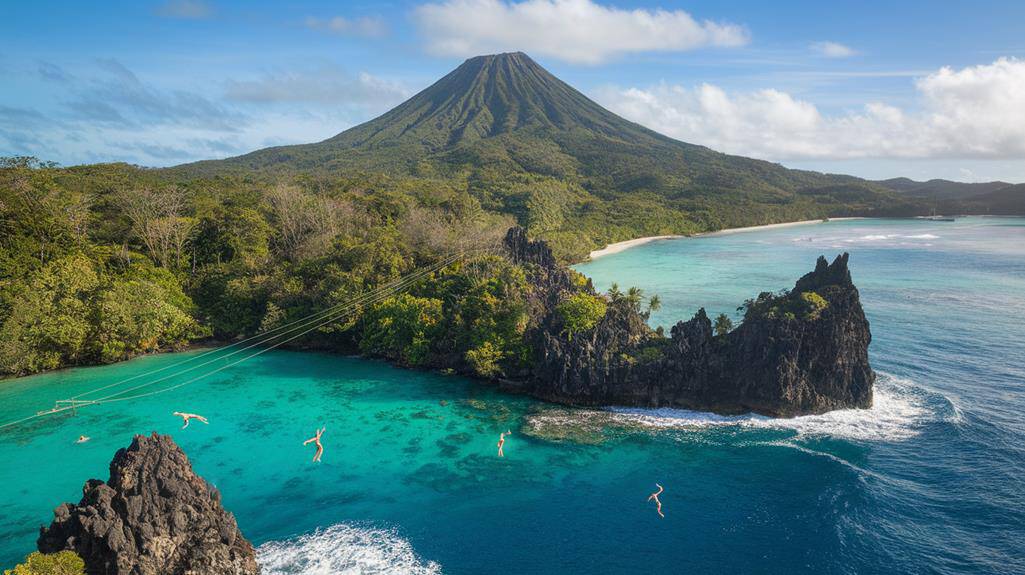
10 Unforgettable Tropical Island Escapes for Thrill-Seekers
For adrenaline junkies seeking tropical thrills, these island escapes offer heart-pounding adventures. You'll find yourself scaling Bali's active volcanoes, conquering Fiji's monstrous Cloudbreak surf, and ziplining through Costa Rica's cloud forests. Maui's north shore beckons kiteboarders, while the Dominican Republic's rushing rivers promise exhilarating whitewater rafting. Réunion Island's canyons provide a playground for canyoning enthusiasts, and Boracay's skies offer breathtaking paragliding experiences. Dive with sharks in The Bahamas' crystal-clear waters, or take the plunge with a bungee jump in Phuket. These destinations combine pristine natural beauty with adrenaline-fueled activities, ensuring unforgettable experiences for thrill-seekers. Explore further to uncover the unique details of each adventure.
In a Nutshell
- Bali offers volcano hikes, including challenging treks up Mount Batur and Mount Agung for breathtaking sunrise views.
- Fiji's Cloudbreak provides world-class surfing for advanced riders, with waves reaching up to 20 feet over shallow coral reefs.
- Costa Rica boasts extensive zipline networks, including the 4,461-foot "Superman" style line at Diamante Eco Adventure Park.
- Palau's Jellyfish Lake offers a unique snorkeling experience among millions of harmless golden jellyfish in a protected marine ecosystem.
- The Bahamas provides unparalleled shark diving opportunities in crystal-clear waters, with options for both beginners and experienced divers.
Bali's Thrilling Volcano Hikes
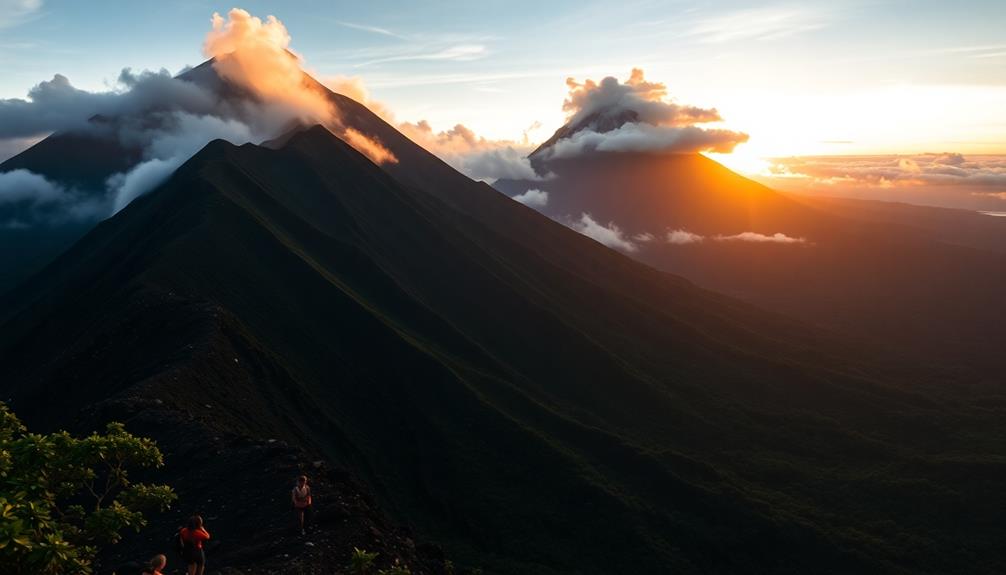
While Bali's beaches often steal the spotlight, its volcanic landscapes offer heart-pounding adventures for thrill-seekers. Mount Batur, an active volcano standing at 1,717 meters, presents a challenging pre-dawn trek that rewards you with breathtaking sunrise views. You'll navigate steep, rocky terrain in darkness, guided by experienced locals. For a more intense experience, tackle Mount Agung, Bali's highest peak at 3,031 meters. This grueling 12-hour hike demands excellent fitness and technical skills. You'll encounter steep inclines, loose scree, and potentially dangerous conditions near the summit. Mount Bratan, while less demanding, offers a unique trek through lush forests to its crater lake. For these volcanic hikes, durable waterproof boots with excellent traction are essential to navigate the challenging terrain safely. You'll need proper hiking boots, warm layers, and ample water for these adventures. It's vital to hire reputable guides and check current volcanic activity reports before undertaking these thrilling hikes.
Surfing Fiji's Monstrous Cloudbreak
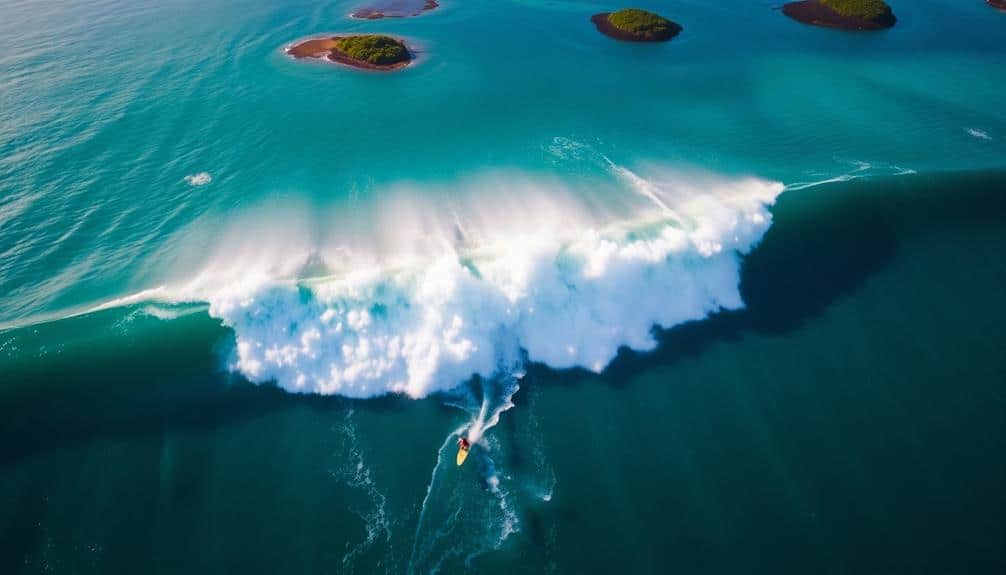
Out of all the world's surf spots, Cloudbreak in Fiji stands as one of the most formidable and awe-inspiring. Located 1.5 miles off Tavarua Island, this left-breaking reef wave can reach heights of up to 20 feet. You'll need advanced surfing skills and nerves of steel to tackle Cloudbreak's powerful barrels and long, fast rides. For those who enjoy portable fitness options, there are compact resistance training solutions that can help maintain your strength and endurance while traveling to remote surf destinations. The wave breaks over a shallow coral reef, adding an extra element of danger to your surfing experience. To surf Cloudbreak, you'll need to stay at one of the nearby resorts or charter a boat. The best time to catch this monstrous wave is during the southern hemisphere's winter months, from April to October, when swells are most consistent. Proper safety gear, including a helmet and reef booties, is essential for maneuvering Cloudbreak's challenging conditions.
Zipline Adventures in Costa Rica
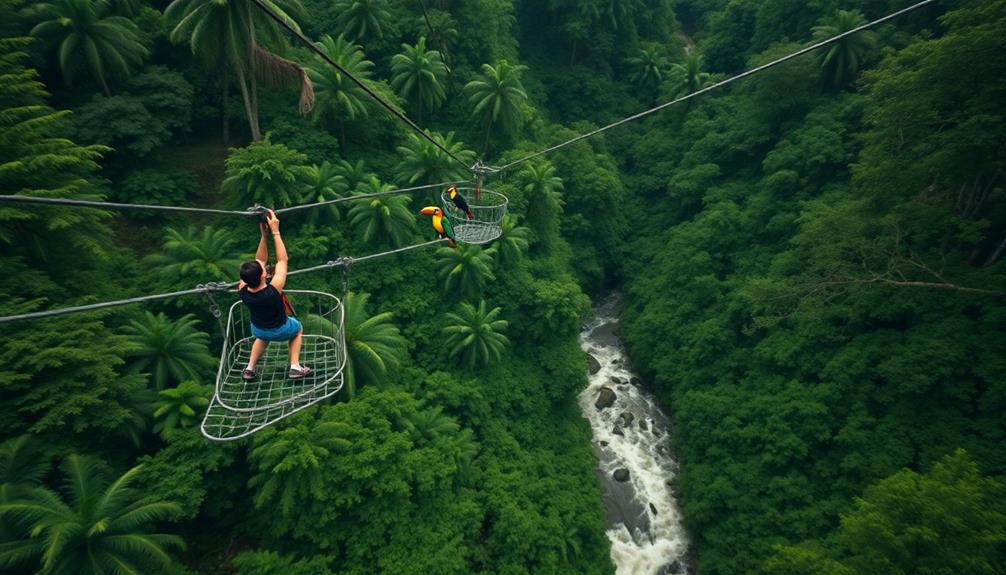
For thrill-seekers looking to trade ocean waves for jungle canopies, Costa Rica offers some of the world's most exhilarating zipline adventures. The country boasts an extensive network of cables, some stretching over 2,500 feet long and reaching heights of 500 feet. Monteverde Cloud Forest Reserve, a biodiversity hotspot, features a series of ziplines that allow you to soar through misty treetops at speeds up to 40 mph. For the ultimate adrenaline rush, try the "Superman" style zipline at Diamante Eco Adventure Park, where you'll fly face-down for 4,461 feet. Lightweight tripods are perfect for capturing stunning aerial shots during your zipline experience, with options like the K&F Concept 64-inch tripod supporting up to 17.6lbs of gear. Safety is paramount, with operators using state-of-the-art equipment and adhering to strict protocols. Most tours include multiple ziplines, suspension bridges, and rappelling elements, providing an all-encompassing canopy experience. When selecting a tour, consider factors such as line length, height, speed, and additional features to match your thrill tolerance.
Maui's Heart-Pumping Kiteboarding Scene
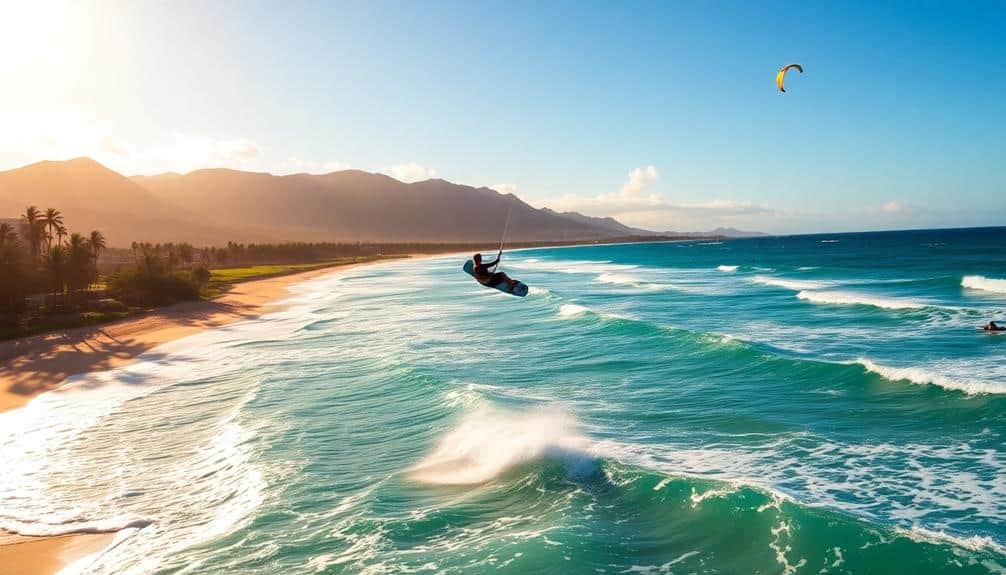
Maui's kiteboarding scene has taken off in recent years, attracting thrill-seekers from around the globe. The island's north shore, particularly Kite Beach in Kahului, offers ideal conditions for both beginners and experienced riders. With consistent trade winds and warm waters, you'll find superb kiteboarding conditions year-round. Advanced riders can tackle the challenging waves at Ho'okipa Beach Park, known for its world-class surf breaks. For those new to the sport, numerous schools offer thorough lessons, covering safety, equipment handling, and basic techniques. When planning your trip, consider visiting between May and October for the strongest winds. Don't forget to pack appropriate gear, including a wetsuit, harness, and impact vest. Maui's kiteboarding community is welcoming and supportive, making it easy to connect with fellow enthusiasts and local experts.
Whitewater Rafting in Dominican Republic
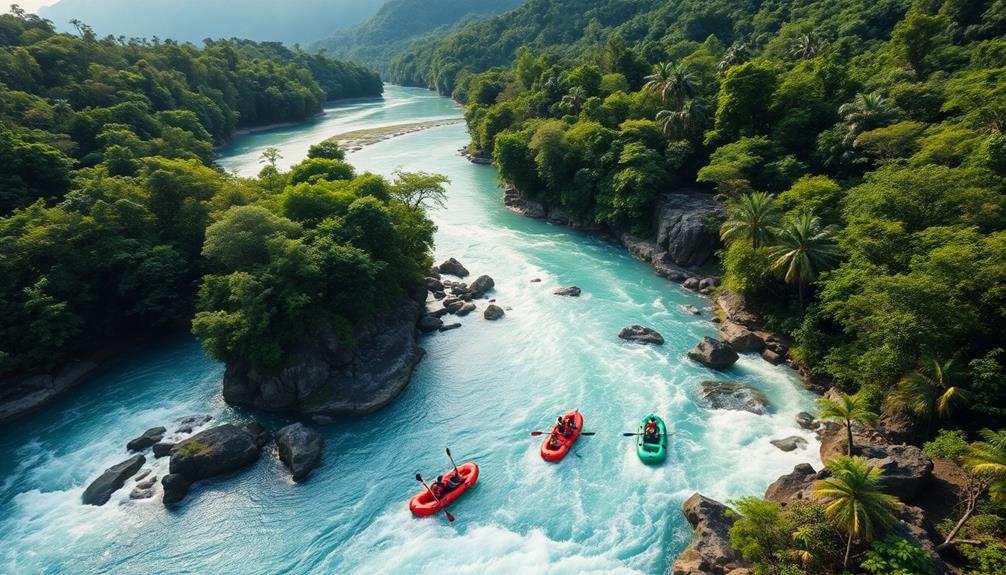
Plunge into the heart-pounding adventure of whitewater rafting in the Dominican Republic's pristine rivers. The island's diverse topography offers a range of rapids, from gentle Class II to challenging Class IV, catering to both novices and seasoned rafters. Navigate the Río Yaque del Norte, the country's longest river, for an exhilarating journey through lush tropical landscapes.
Key aspects of Dominican Republic whitewater rafting:
- Season: Best from November to April
- Duration: Trips typically last 3-5 hours
- Equipment: Modern rafts, helmets, and life jackets provided
- Guides: Experienced professionals lead all expeditions
- Difficulty: Options available for various skill levels
For an unforgettable experience, consider a multi-day expedition on the Río Jimenoa. You'll encounter breathtaking waterfalls, hidden canyons, and diverse wildlife while honing your rafting skills under expert guidance. Remember to book with reputable outfitters who prioritize safety and environmental conservation.
Scuba Diving Palau's Jellyfish Lake
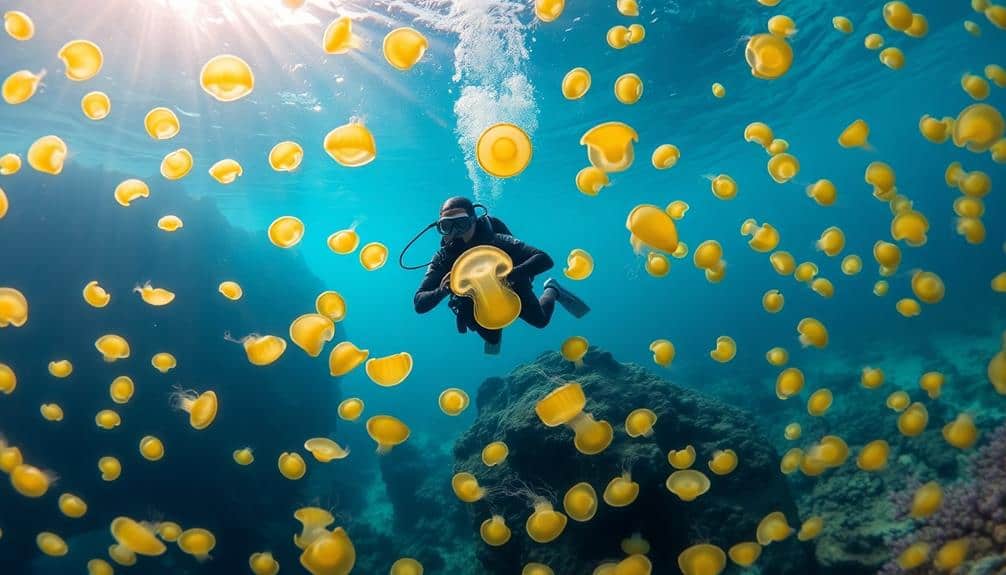
Thrill-seekers and underwater enthusiasts alike will find paradise in Palau's Jellyfish Lake. This unique marine ecosystem, located on Eil Malk Island, offers an otherworldly experience as you swim among millions of harmless golden jellyfish. The lake, measuring 12 acres and reaching depths of 50 feet, is connected to the ocean through fissures in the limestone, creating a brackish environment. Water visibility ranges from 40 to 60 feet, allowing for clear observation of the jellyfish's pulsating movements. To protect this delicate habitat, only snorkeling is permitted; scuba gear is prohibited. The best time to visit is between January and May when jellyfish populations peak. Visitors must obtain a permit and adhere to strict guidelines, including using only reef-safe sunscreen and avoiding touching the jellyfish. This extraordinary adventure provides a rare opportunity to witness a natural phenomenon found nowhere else on Earth.
Canyoning Réunion Island's Waterfalls
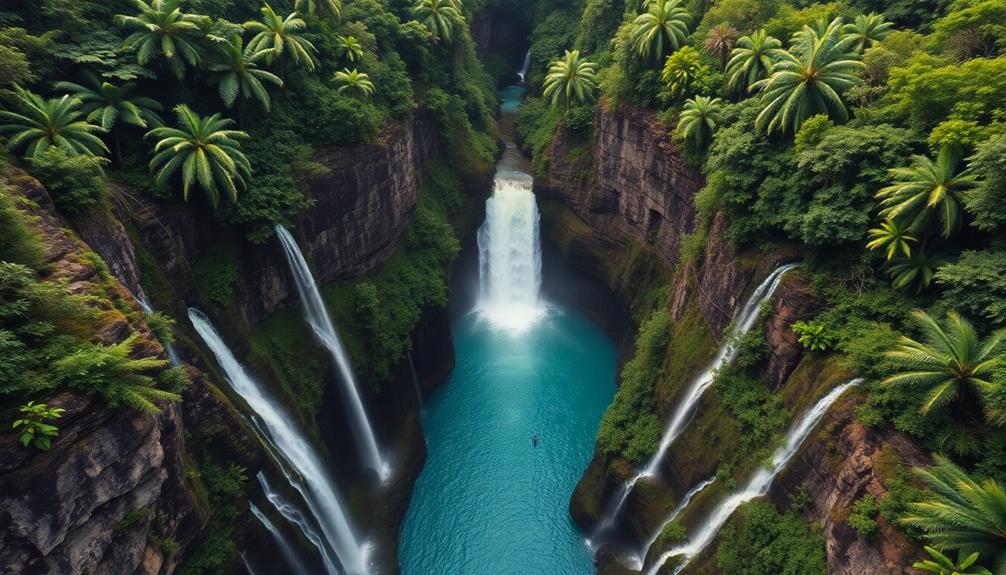
For those craving an adrenaline rush on land, Réunion Island offers a heart-pounding alternative to underwater adventures. Canyoning through the island's rugged terrain and cascading waterfalls provides an exhilarating experience for thrill-seekers. As you navigate the island's diverse canyons, you'll encounter:
- Rappelling down sheer rock faces
- Sliding through natural water chutes
- Jumping into crystal-clear pools
- Scrambling over boulders and through narrow passages
- Swimming through turquoise lagoons
The island's volcanic landscape creates a unique environment for canyoning, with routes ranging from beginner-friendly to expert-level challenges. You'll need proper equipment, including a wetsuit, helmet, and harness, which can be rented from local outfitters. It is crucial to go with experienced guides who know the terrain and can guarantee your safety. The best time for canyoning on Réunion is during the dry season, from May to November, when water levels are more manageable.
Paragliding Over Boracay's Beaches
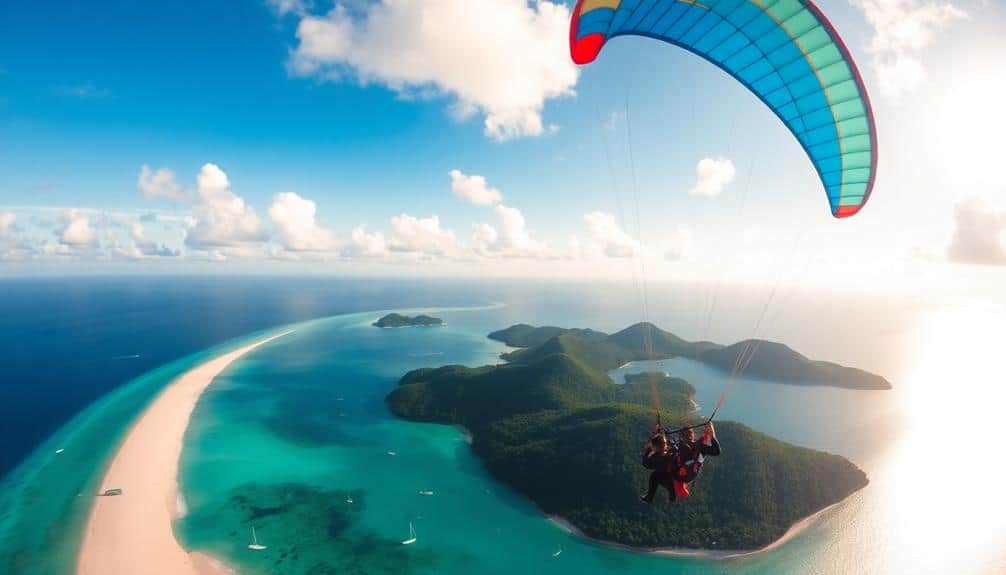
Soaring high above Boracay's pristine shores, paragliding offers an unparalleled aerial adventure for adrenaline junkies. You'll launch from Mount Luho, the island's highest point at 100 meters, providing an ideal vantage point for your flight. Tandem paragliding sessions typically last 15-20 minutes, depending on wind conditions. Your experienced pilot will guide you through thermal currents, allowing you to reach altitudes of up to 500 meters. As you glide, you'll witness breathtaking views of White Beach, Bulabog Beach, and the turquoise waters surrounding the island. For the best experience, book your flight during the dry season (November to April) when winds are most favorable. Wear comfortable clothing and closed-toe shoes, and don't forget your camera to capture the stunning aerial perspectives. Upon landing, you'll touch down smoothly on the soft sand of White Beach.
Shark Diving in The Bahamas
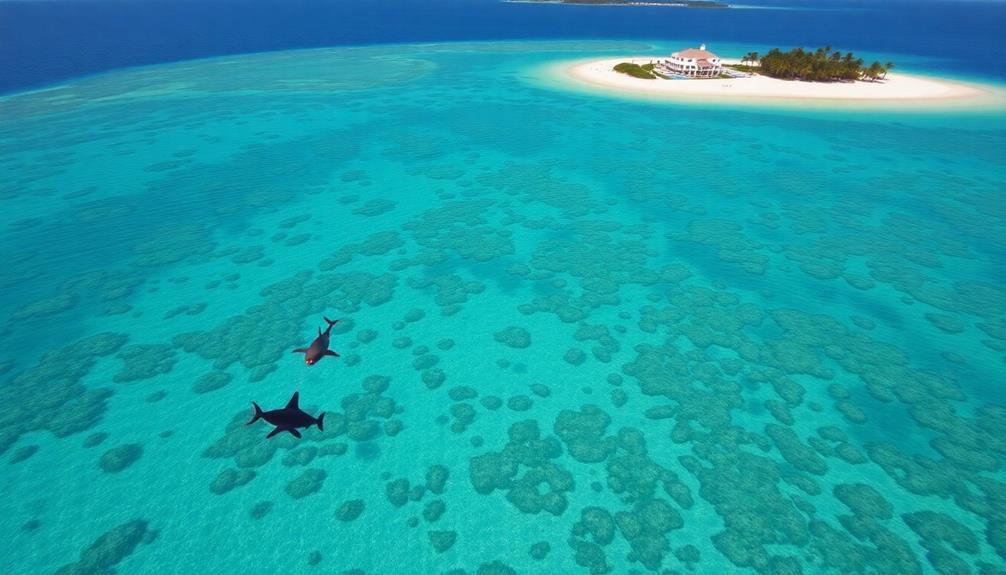
Where can you come face-to-face with some of the ocean's most formidable predators? The Bahamas offers unparalleled opportunities for shark diving, with its crystal-clear waters teeming with diverse species. Stuart Cove's Dive Bahamas, located in Nassau, provides expert-led excursions to encounter these magnificent creatures in their natural habitat. You'll descend into the depths, surrounded by Caribbean reef sharks, nurse sharks, and occasionally, the elusive tiger shark.
Key aspects of shark diving in The Bahamas include:
- Professional guides initiate safety protocols
- Cage diving options for beginners
- Baited dives to attract larger species
- Underwater photography opportunities
- Year-round visibility exceeding 100 feet
Before embarking on your adventure, you'll receive a thorough briefing on shark behavior and diving techniques. The experience typically lasts 2-3 hours, with 30-45 minutes of bottom time. Water temperatures range from 75°F to 82°F, requiring a 3mm wetsuit for comfort.
Bungee Jumping in Phuket

Adrenaline junkies visiting Phuket can't miss the heart-pounding thrill of bungee jumping at Jungle Bungy Jump. Located in the lush Kathu district, this 50-meter-high platform offers a 165-foot plunge over a serene lagoon. You'll experience a 3-second freefall, reaching speeds up to 120 km/h before the elastic cord snaps you back up. The facility uses state-of-the-art New Zealand-style bungee equipment, ensuring maximum safety with regular maintenance checks. Jumps are available daily from 9 AM to 6 PM, with experienced staff providing thorough briefings and assistance. For added excitement, try the "water touch" option, where you'll graze the lagoon's surface. Prices start at 2,800 THB per jump, including transportation from major Phuket areas. It's advisable to book in advance, especially during peak tourist seasons, to secure your preferred time slot.
Frequently Asked Questions
What Vaccinations Are Recommended for Tropical Island Adventures?
Picture your immune system as a fortress, and vaccinations as its reinforcements. For tropical island adventures, you'll want to fortify your defenses. Recommended vaccinations typically include Hepatitis A and B, Typhoid, and Tetanus. Depending on your destination, you may also need Yellow Fever, Japanese Encephalitis, or Rabies shots. It's essential to consult with a travel health specialist at least 4-6 weeks before your trip, as some vaccines require multiple doses or time to become effective.
How Can I Protect My Electronic Devices From Sand and Water Damage?
To protect your electronic devices from sand and water damage, you'll need to invest in high-quality waterproof cases or dry bags. Opt for cases with IP68 ratings for maximum protection. Use silica gel packets to absorb moisture inside your cases. When not in use, store devices in airtight containers. Apply screen protectors and port covers for additional defense. Always clean your devices with a soft, dry cloth after exposure to sand or salt water. Consider purchasing waterproof or ruggedized versions of essential electronics for added durability.
Are There Age Restrictions for Participating in Extreme Tropical Sports Activities?
You'd think extreme tropical sports are open to all ages, but that's not always the case. Age restrictions vary depending on the activity and location. Generally, you'll find minimum age requirements ranging from 12 to 18 for activities like bungee jumping, skydiving, and scuba diving. Some providers may allow younger participants with parental consent or if accompanied by an adult. It's pivotal to check specific regulations, as they're designed to safeguard safety and minimize risks for participants.
What Travel Insurance Covers Adventure Activities in Tropical Destinations?
When seeking travel insurance for adventure activities in tropical destinations, you'll want to look for policies that specifically cover high-risk sports. Many standard policies don't include coverage for activities like scuba diving, bungee jumping, or paragliding. Look for insurers offering "adventure sports coverage" or "extreme sports add-ons." These policies typically cover medical expenses, evacuation, and equipment damage related to adventure activities. Always read the fine print, as coverage limits and excluded activities can vary markedly between providers.
How Do I Prepare for Potential Language Barriers on Remote Tropical Islands?
To prepare for language barriers on remote tropical islands, you'll want to learn key phrases in the local language, focusing on greetings, numbers, and essential questions. Download a translation app that works offline, and carry a pocket phrasebook for quick reference. Consider investing in a portable language translator device, which can provide real-time translations. Additionally, practice nonverbal communication techniques, such as gesturing and drawing, to supplement your linguistic efforts when necessary.
